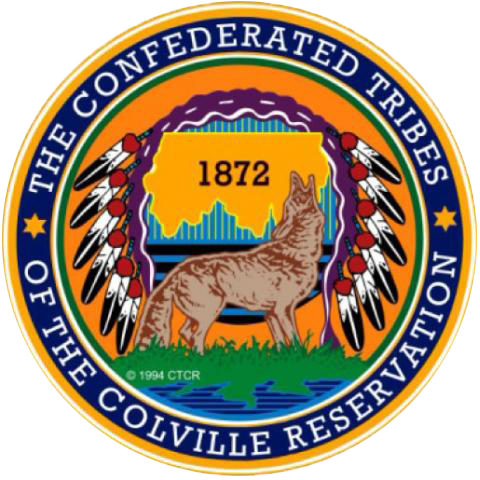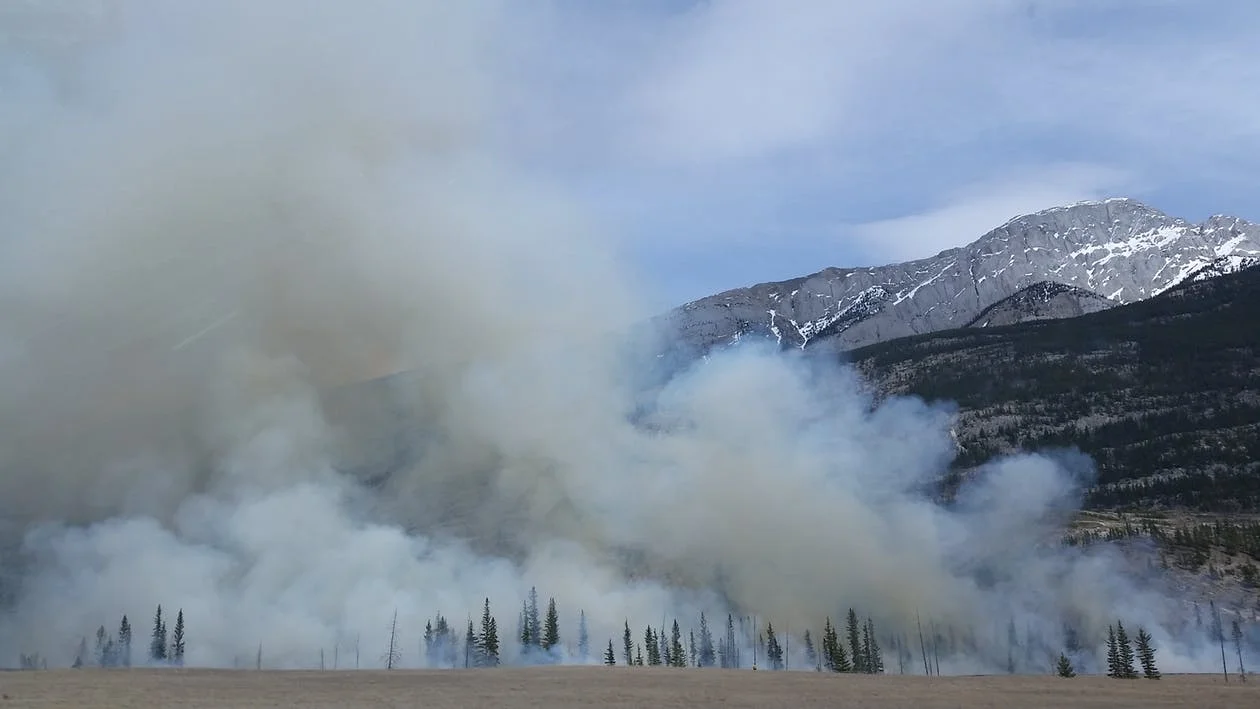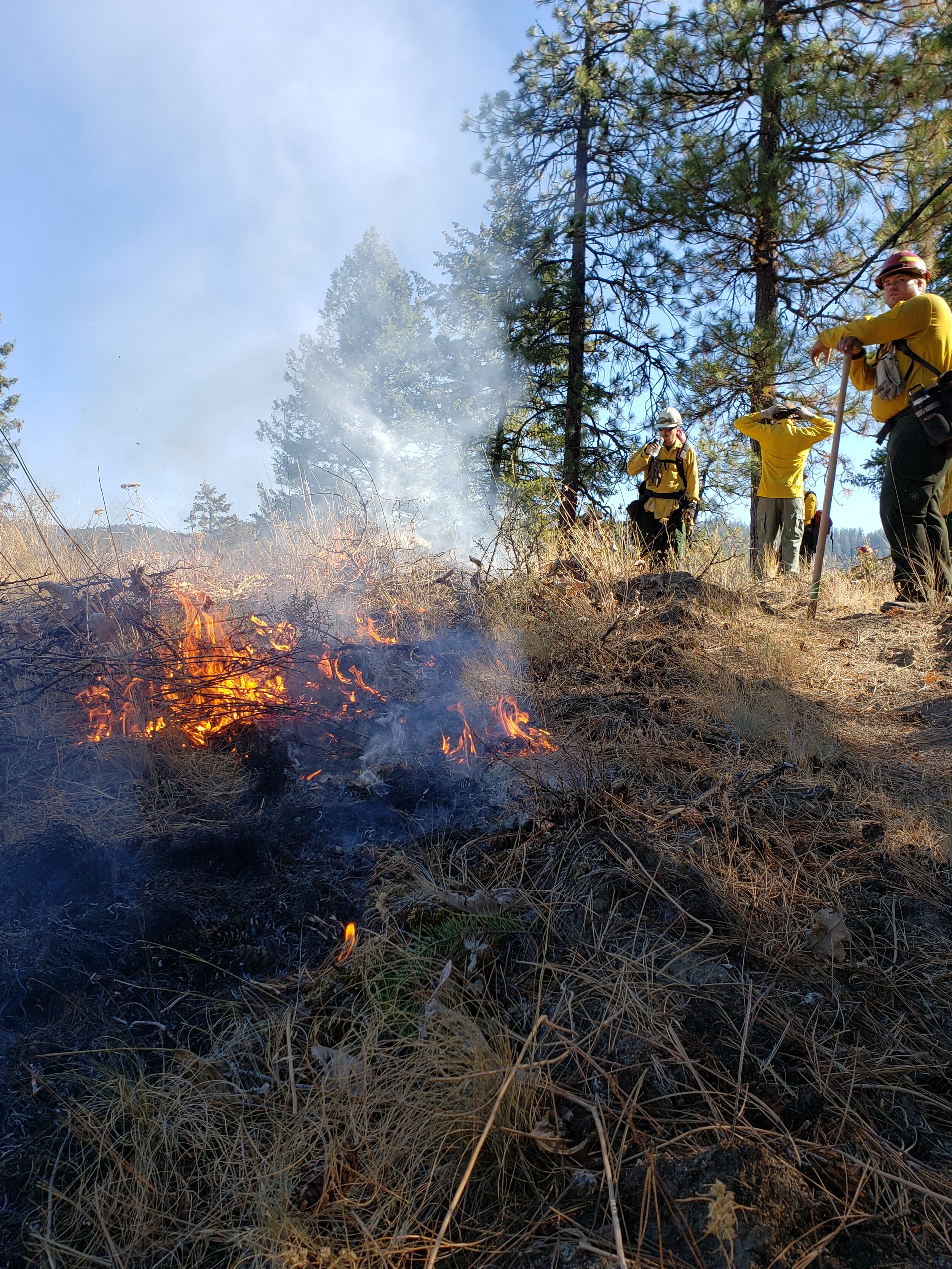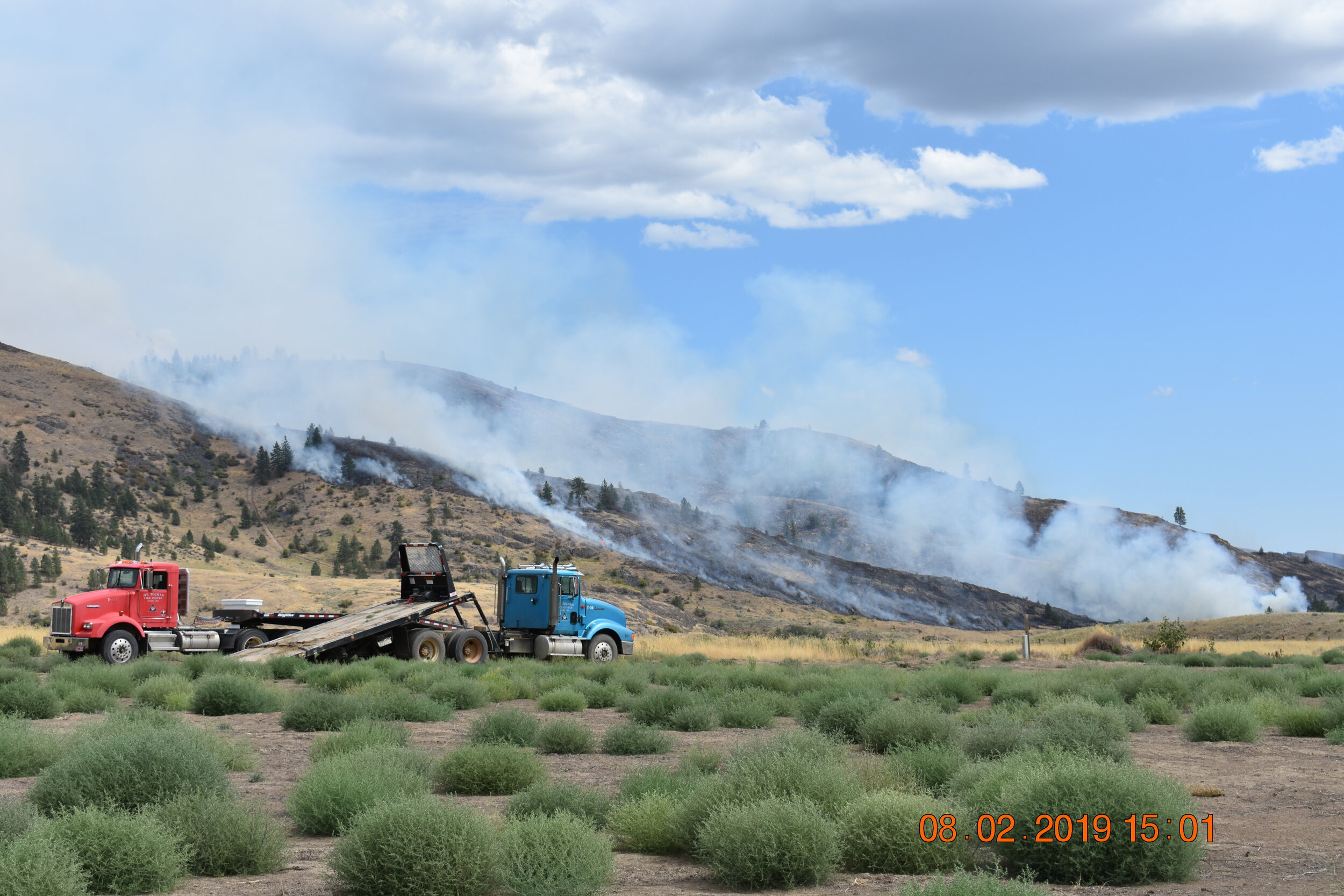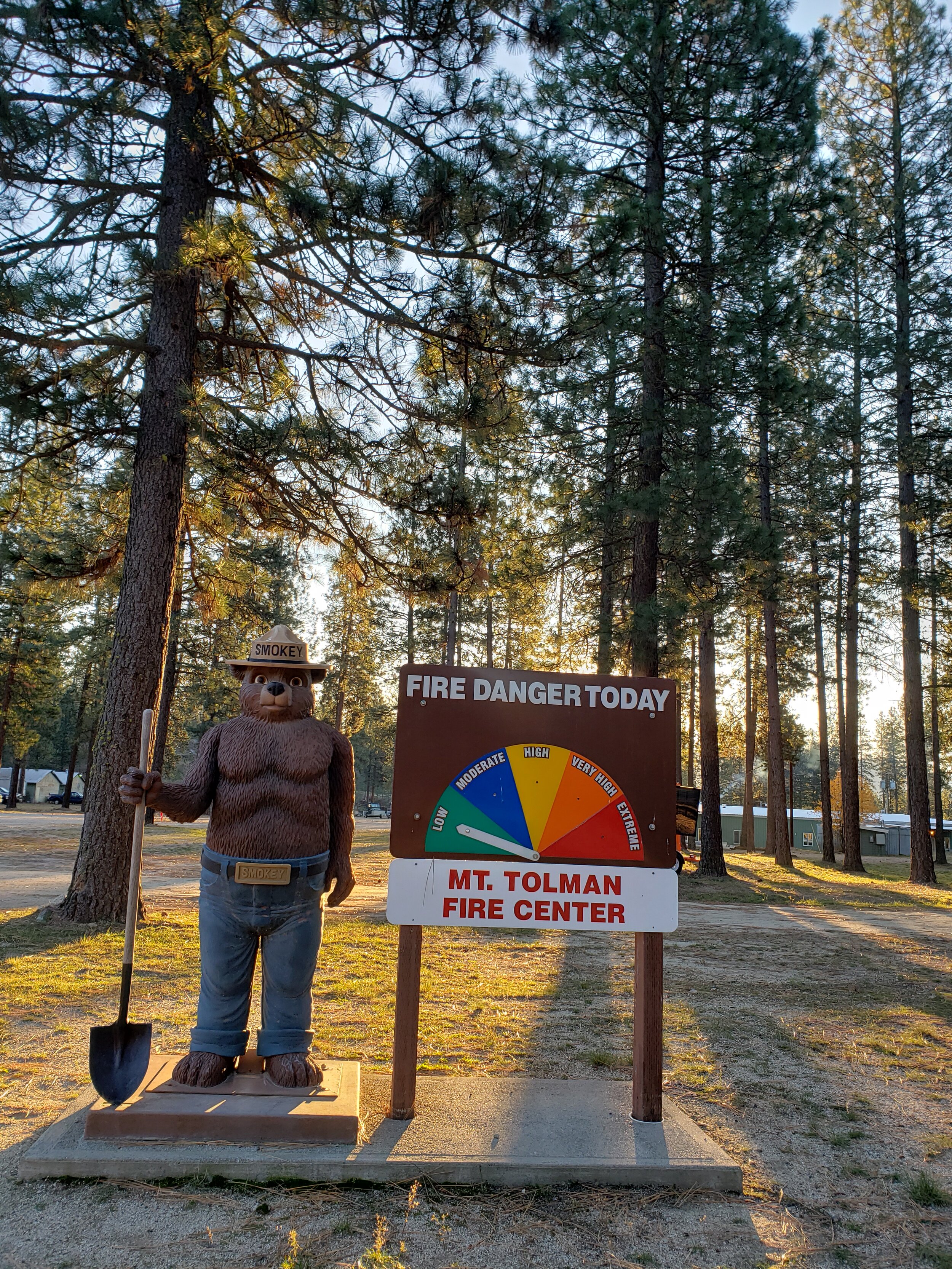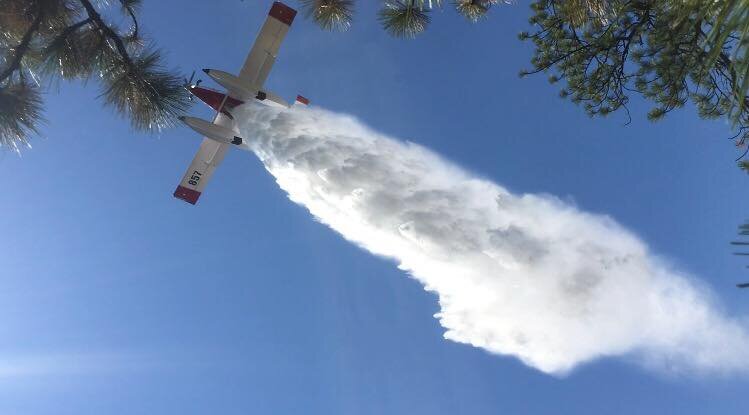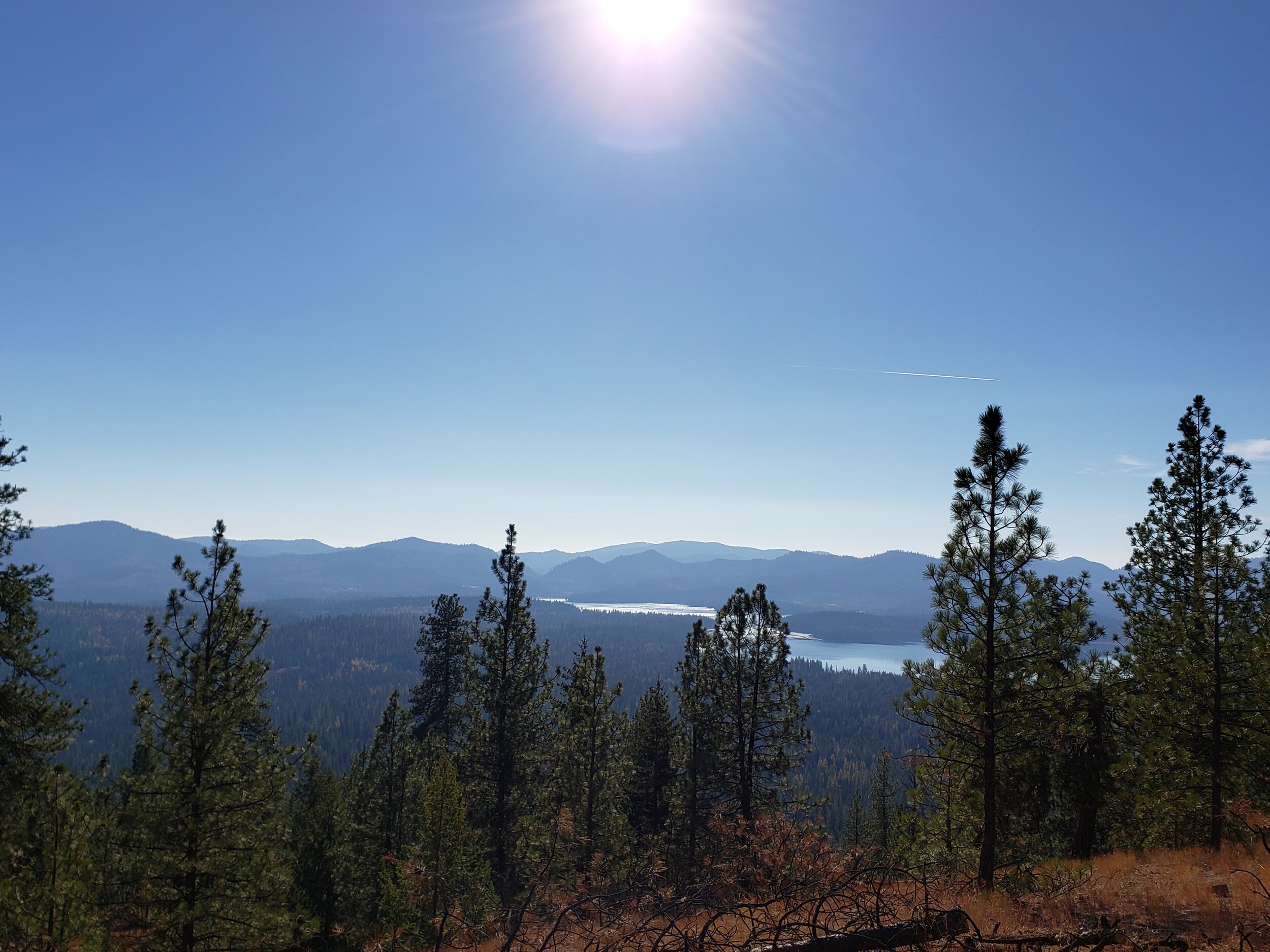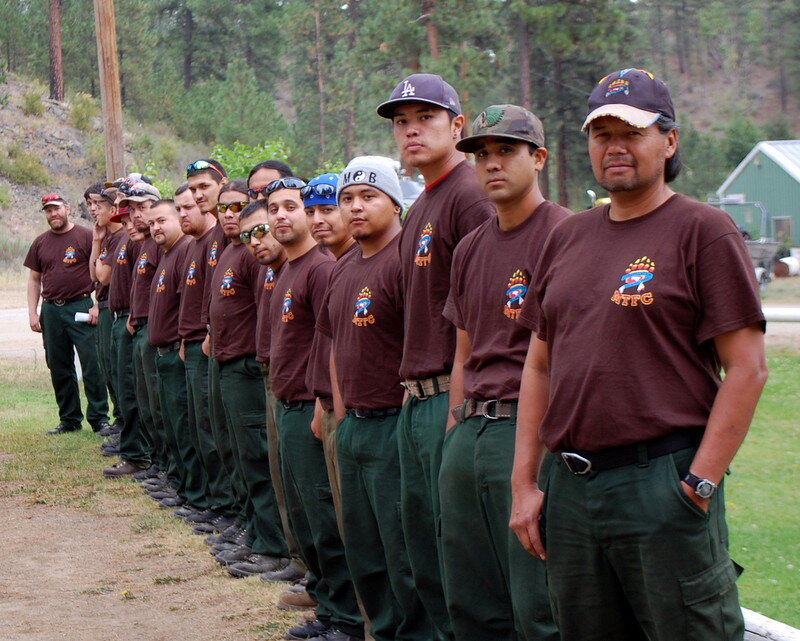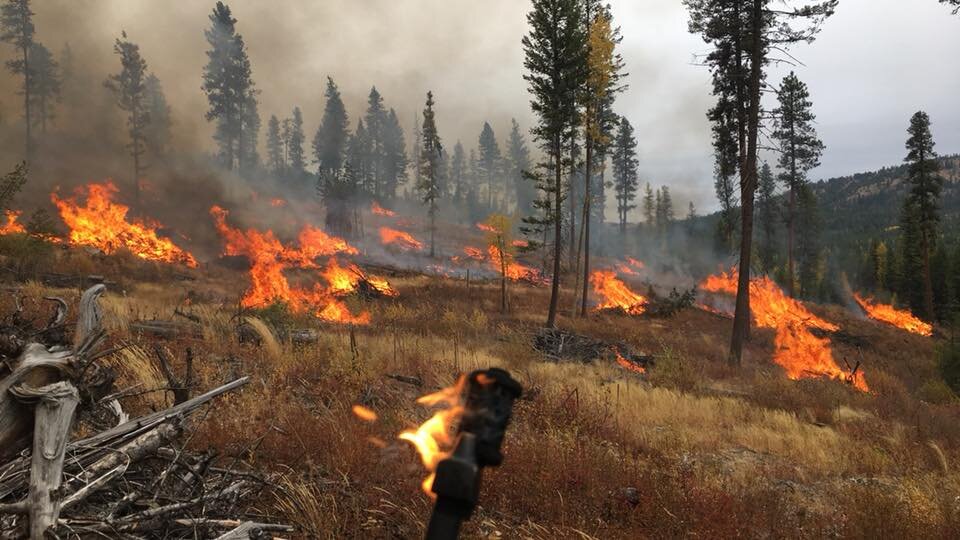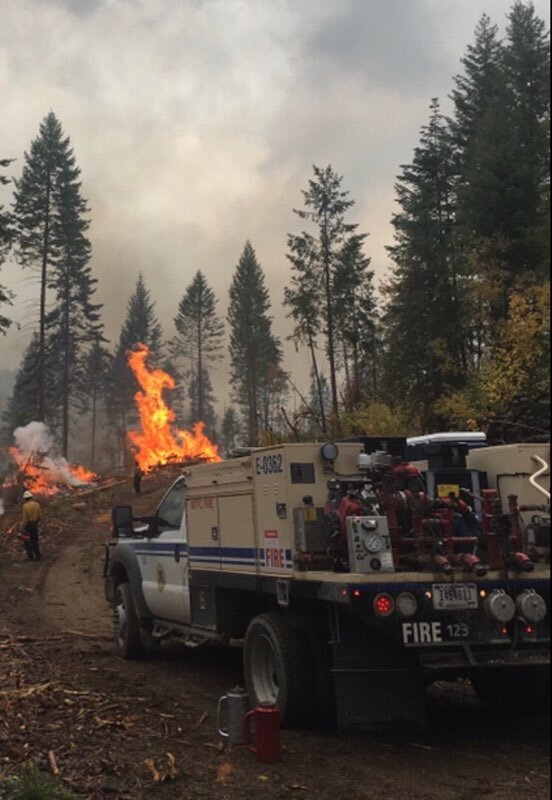Mount Tolman Fire Center
MTFC Dispatch Office (509) 634-3100
Announcement:
If interested in becoming a firefighter please call the Mt Tolman Fire Center at (509) 634-3100 to set up an appointment. (Must be 18 years of age or older and physically able to pass the Pack Test)
Address
Mount Tolman Fire Center, P.O. Box 188, Keller, Washington, 99140
Physical Address
90 Mount Tolman rd., Keller, Washington, 99140
Fax
Nespelem Dispatch Office (509) 634-3149
Inchelium Fire (509) 722-7687
Nespelem Fire Center (509) 634-2592
Business hours
Monday - Friday from 7:00 am to 4:30 pm.
Fire Season Hours
Sunday - Saturday from 7:00 am to 6:00 pm.
Three patrol areas
Omak/Nespelem District
San Poil District
Inchelium District
Four Main Departments
Fuels: Prescribed Fires, Hazard Fuels Reduction Wildland Urban Interface, and Monitoring.
Logistics: Dispatch, Warehouse, Mechanics, Fire Prevention, and Lookouts.
Operations: Wildland Fire Suppression, Aviation Management, Engines and Operators.
Finance: Accounting, Purchasing, and Timekeeping.
Staff
Seth Labro | Warehouse Manager | Email | (509) 634-3134 | cell (509) 733-0591
Robin Atlin | Assistant Dispatcher | Email | (509) 634-3106 | cell (509) 675-0675
Debbie Caudell | Lead Dispatcher | Email | (509) 634-3105 | cell (509) 570-4133
Ike Cawston | FMO | Email | (509) 634-3109 | cell (509) 978-8043
Isaac Cawston Jr | Prevention Officer | Email | (509) 634-3157
Lonnie Cawston | Fuels Manager | Email | (509) 634-3118 | cell (509) 631-4021
Vacant | Accounting/Finance Temp. | Email | (509) 634-3115
Clint Desautel | Fuels ISA | Email | (509) 722-7099 | cell (509) 680-6509
Liz Dick | Seat Base Manager | (509) 826-1609 | cell (509) 634-1279
Temp | Fuels ISA | Email | (509) 722-7099 | cell (509) 690-4232
Kevin Manuel | Fuels Tech. NFC | Email | (509) 634-2563
Jason Fulfer | Operations Supervisor | Email | (509) 634-3179 | cell (509) 342-6369
Vacant | Monitoring | Email | (509) 634-3113
Rebecca Peone | BAER / Monitoring | Email | (509) 634-3113 | cell (509) 631-4349
Merv Seylor | Shop Mechanic | (509) 634-3136 | cell (509) 631-0043
Vacant | Timekeeper/Finance | Email | (509) 634-3108
Ookie Marconi | Logistics Supervisor | Email | (509) 634-3110 | cell (509) 722-4082
Debra Tonasket | Fuels/Aviation | Email | (509) 634-3114
Enid Wippel | Head of Finance | Email |(509) 634-3107
Melissa Pierre | Accounting/Finance | Email | (509) 634-3108
Daisy Whitelaw | Fuels Tech S.P. | Email | (509) 634-3100
Vancant | Timekeeper | Finance | (509) 634- 3116
-
Evacuation Levels. During a Wildfire these Evacuation levels are color coordinated Trigger Points alerting you when the fire is in your area and when it is time to go.
Level One: (Green) means be ready to go. Be aware a fire is in your area.
Level Two: (Yellow) get set to go. A fire is getting close to your home.
Level Three: (Red) means GO! Gather your things and GO!
-
No one can predict when and where dangerous fire situation will occur. It’s always good to develop a Fire Evacuation Plan for when an emergency situation threatens your home. Here you will find a few pointers followed by our brochure holding more information.
Staying current on local Wildfires or Emergency Weather Warnings on the Mt Tolman Tribal website, Mt Tolman Fire Center Facebook page, Public Safety broadcasts, and Information boards across the Reservation will help you identify any fire hazard warnings from Fire Management to the public on any Fire activity threatening your area. This system gives you the heads up on when its time to go.
Create a checklist and a to-go-bag manageable enough for you and your Family members and contain what is the most important to you and your loved ones. Make sure you plan around the complicity of your escape vehicle.
REMEMBER THE SIX “P’S” When creating your checklist
People and pets
Papers, phone numbers, and important documents
Prescriptions, vitamins, and eyeglasses
Pictures and irreplaceable memorabilia
Personal computer hard drive and disks
“Plastic” (credit cards, ATM cards) and cash
-
Escape Routes need to be well traveled routes identified in both daylight and night to your Safety Zone. It is also wise to have more then one in case the other is compromised by the fire. the ideal escape route would be a fast improved road to the highway away from the fire front. Once you’ve got your Escape Route and Safety Zone identified you may need to set up a place to stay overnight or long term depending.
-
It is always important for Homeowners to maintain landscaping. It becomes extremely important if they live in a Wildland Urban Interface Area. Most homes and communities on the Reservation are built in these type areas and would be considered “at-risk” in a wildfire situation.
A definition for The Wildland Urban Interface (WUI) is a zone of transition between wild-land (unoccupied land) and human development, the area where houses meet or intermingle with undeveloped wild-land vegetation. Communities in the WUI are at a greater risk of catastrophic wildfire.
Firefighters break these areas into treatment zones. Stretching out to 100’ feet around the structure is called the Home Ignition zone that contains four zones. These are the closest zones and are more personal and managed by the homeowners. From 100+ feet out is the fourth zone and may be transitioned outward to a WUI zone, depending on the property ownership. Outside ownership areas may require other treatments involving different departments and a planning process to reduce the adjacent threat.
What can a Homeowner do?
Always plan ahead. Fire Behavior and Wildland Vegetation (Fuels) are two factors of a wildfire. Fire Behavior depends on weather and topography of the area and cannot be predicted, where Wildland Vegetation depends on the geographical location and can be modified. On the Reservation wildland vegetation consist of grasses, sage brush, shrubs, weeds, tree litter and timber.
A Homeowner can maintain their landscape around the Home Ignition Zone. Removing non-running vehicles and other debris from house will decrease tactical challenges. Mowing grass completely around home, cutting down brushy fuels and spacing out trees is the most achievable goal to build a Defensible Space.
Eliminating those hazardous will not only reduce chances of losing your structure it will accommodate firefighters with a chance to establish a Lookout, Communications, Escape Route, and a Safety Zone during an active fire in a WUI area.
If you own a home on the Reservation and seek more information on WUI and Defensible Homes you may contact Mt. Tolman Fire Center today. (509) 634-3100
-
Campers, during the Burn-Ban we support Portable Propane Campfires to prevent wildfires. So far they have been proven to be safe and reliable option for your outdoor camping activities and do not require a permit for usage on the Colville Reservation. They’re easy to operate, and will not launch embers into any adjacent fuels causing a wildfire emergency apposed to a wood-burning campfires. If you are caught having a wood-burning campfire you will be ticketed, or in the event you cause a wildfire you will be held responsible for all damages and resources lost in the event.
When using one, please choose a safe environment clear of tall grass and over hanging brush, portable must stand above ground, must be set up and secure, and have a responsible adult tending the fire at all times.
